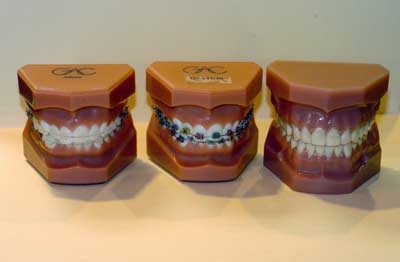When most people hear the term “Braces Inside the Mouth” they automatically think traditional, front-facing braces, but this leaves out another popular form of braces, lingual braces. Lingual braces, as you may know, are braces placed behind the teeth that perform the same functions as their front-facing counterpart.
Many patients ask why they should choose one form of braces treatment versus another, so today we wanted to answer some common questions in regards to lingual and traditional braces that may help guide you towards your decision.
1.) Why would I choose Lingual over traditional braces?
Most choose Lingual braces because they are “hidden” or “invisible” due to their placement behind the teeth. This aesthetic benefit is the primary differentiator between the two forms of treatments.
2.) Who are the best candidates for Lingual braces?
Good candidates for lingual braces are adults or older teens with no baby teeth remaining, whose primary dental concern is the cosmetic appearance of their teeth during treatment. Linguals are the only non-visible teeth straightening treatment available.
3.) What are the disadvantages of Lingual braces?
– Invisible braces placed behind a patient’s teeth are known to cause speech abnormalities such as a lisp. However, this side effect can be overcome with practice and the use of a wax barrier on the braces
– Lingual braces are generally more expensive than traditional braces because they are more labor intensive to install and maintain
– Lingual braces treatments tend to take longer than traditional braces due to their placement
If you have any additional questions or would like to set-up a free consultation please call or visit my San Diego orthodontics office today.




